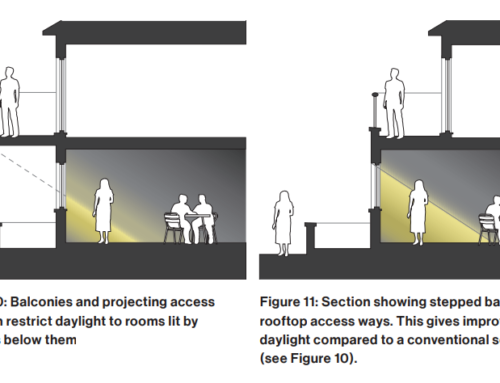In the realm of property development, the idea of "Right to Light" is of great significance for both builders and local inhabitants. With the ongoing evolution of urban areas and densely populated areas expand, ensuring proper lighting access for pre-existing buildings is a critical issue. This is where Right to Light surveys play a crucial role, serving as an essential tool for assessing and mitigating potential disputes stemming from new constructions. Comprehending the finer details of these surveys not only aids developers in adhering to legal requirements but also fosters harmonious relationships with adjacent properties.
The legal framework surrounding Right to Light in the UK is deeply rooted in history, interwoven with property law and planning policies. As someone in property development, being well-informed about your legal rights and responsibilities is paramount. This article aims to explore the various facets of Right to Light surveys, providing insights into their significance in residential projects and the processes involved. Starting from the initiation of surveys to understanding the implications of daylight and sunlight reports, we will explore the intricacies of this vital aspect of planning and development, helping you to not only safeguard your investments but also honor the rights of your neighbors.
Grasping Rights to Illumination
Right to illumination refers to the legal entitlement that property owners possess to get natural light through specific openings in their structures. This right is typically based on established usage, meaning that if a piece of property has enjoyed significant light for a specific period, the owner may have the entitlement to continue receiving that light, even if adjacent developments attempt to block it. This concept is especially important in urban settings where buildings are often in nearby closeness to one another, leading to complex interactions regarding natural light and daylight access.
In the United Kingdom, the right to light is regulated by traditional legal principles, where recognized rights can be claimed after uninterrupted use for 20 years. The juridical foundation for right to light means that property developers must conduct thorough surveys and evaluations before proceeding with construction plans, as infringing on these rights can result in disputes, claims for damages, or even the necessity for injunctions to prevent development. Understanding this legal structure is essential for both developers and homeowners to ensure compliance and reduce risks.
The significance of right to light is not restricted to observance with legal regulations; it also influences the overall design and success of residential projects. By ensuring adequate light access, developers can maintain attractive living spaces that meet the requirements of potential buyers. Engaging effectively with neighbors and interested parties about light privileges can foster better relationships and prevent conflicts, making light factors a critical element in the planning and development process.
Legal Implications and Adherence
Comprehending the legal consequences of right to light is essential for real estate developers. In the United Kingdom, the right to light is a longstanding legal principle that can significantly influence the outcome of development proposals and construction endeavors. When a new construction or addition blocks existing light to adjacent properties, it can lead to legal challenges, setbacks, and even stoppages. Developers must make certain their projects conform with these legal rights to prevent potential legal action and to protect their investments.
Adherence to right to light laws demands a comprehensive assessment of how a proposed project will affect neighboring properties. Developers should engage in right to light surveys early in the planning process, allowing them to foresee objections related to light interference. Pinpointing and resolving these issues in advance can help prevent disputes that lead to costly court cases or the need for restructuring projects. Additionally, understanding the subtleties of legal rights can guide better planning choices that consider both the developer’s goals and the neighbors’ light rights.
In the event of an infringement, the legal solutions differ based on the severity and context of the situation. Developers may face injunctions that prevent further construction or can be forced to alter their designs to preserve light for neighboring properties. This highlights the importance of consulting legal experts in right to light matters to navigate compliance successfully. By integrating legal advice with planning and development strategies, developers can foster positive relationships with neighbors and reduce the challenges associated with right to light disputes.
Assessment Procedure and Execution
The procedure of carrying out a Right-to-Light assessment begins with a thorough site assessment by a qualified expert. This involves assessing current light intensity, reviewing adjacent structures, and understanding the specific light requirements of the affected properties. The surveyor will utilize multiple tools, including specific software, to collect data that indicates the level of natural light reaching a property. This initial phase is crucial, as precise data is essential for determining whether proposed developments will violate on established light rights.
Following the evaluation, the assessor prepares a comprehensive Daylight and Sunlight study. This report interprets the information collected and evaluates the potential impact of any new projects on neighboring properties. https://anotepad.com/notes/fkfm4ged are generally evaluated against recognized guidelines, including the Building Research Establishment (BRE) guidelines, to measure the level of light reduction. It is important that builders and interested parties examine this report closely, as it serves as a foundational element during the planning process.

Once the survey and report have been finalized, the next phase is execution. This often includes conversations with planning authorities and landowners to address any potential conflicts due to light violations. If issues arise, the findings can also be a crucial part of discussions to find modifications in development plans. Ultimately, a properly conducted Right to Light survey not only aids in adhering with regulatory standards but also fosters constructive dialogue between builders and the local population, thereby ensuring a mutually beneficial outcome for all stakeholders.
